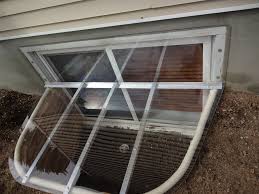Suicide Cleanup: Professional Help is a Must
Family members or landlords may often try to find help online or a guide about how to clean a suicide incident. After the coroner has brought out the body, what’s left is often a lot of blood and chaos. On the internet, when they’re trying to search about how to do it, they might come across a lot of responses involving biohazard companies. See info about biohazards on this webpage.
This is because it’s going to be a hazardous job, especially if one doesn’t know what they’re getting into. Touching blood or brain matter with one’s bare hands could be traumatic, and others may even throw up in the process. If you’re going to factor in the grief and guilt that people may feel after their loved ones have passed due to suicide, then a cleaning job is going to be impossible.
So, before deciding to take on the DIY route, know that there are expert biohazard cleaners who can do the job and handle all the risks involved. Below is an overview of why you may need their help.
Why Hire the Professionals in the First Place?
No one wants to tackle a cleaning job after the death of their loved ones. It’s going to be emotionally draining, not to mention hazardous. With the right professionals from sites like https://www.suicidecleanup.com/, everything can become hassle-free and easier. They will also keep the family away from the traumatic scene of blood spatters or brain matter that may be spread out around the area.
These cleaners are going to brush and scrub every surface to make sure that the area is going to be safe and livable. They will get rid of the blood and other dangerous materials that are going to pose health risks to the owners. With their help, families can enjoy a restored space where they don’t have to deal with the chaos of the tragedy. They can also become more focused on healing and moving on when they don’t have to deal with the cleanings.
Also, the professionals follow strict safety protocols to clean and dispose of dangerous materials effectively. They know how to do these kinds of jobs quickly and efficiently, and before one knows it, everything is over.
The Dangers of DIY Suicide Clean-Up
Deaths often involve a lot of biohazards or even rot. There can be property damage where the cleaners may often step on broken floors, or they may accidentally get stuck with exposed needles. Besides, there can be dangerous bodily fluids and decomposition with bugs all around that they may inhale or ingest. Direct contact poses a lot of risks, and infectious microbes like viruses carrying HIV make everything more complex to handle.
Untrained individuals are not recommended to work in these dangerous environments especially if they don’t know how to start. Instead, calling the experts might be a better choice because they have the proper protective gear and equipment to decontaminate the area.
What’s Required in a Suicide Clean-Up?
Know that standard cleaning supplies simply won’t work, and there should be industrial-grade chemicals and enzyme-based solutions that should be involved. Equipment may include buckets, mops, microfiber clothes, glass cleaning tools, ozone machines, and foggers. Every one of them can be used to remove any pathogens in the area, and they also minimize the resulting odors.
Industrial-strength solvents are used to thoroughly disinfect affected areas like carpets, clothes, and upholstery. Before getting to the scene of the crime, the professionals will also use hazmat suits, respirators, boots, and several layers of gloves to safeguard themselves. When all of the biohazard wastes are gathered, they are placed in bins and hazmat bags and disposed of by strict federal and local laws to ensure public safety.
What’s the Process Involved?
They’ll start by establishing zones where they set a control zone. It’s often the area where the suicide has occurred, and it often requires extensive decontamination and cleaning. A buffer zone is going to be the place, where they will start wearing their PPE and gather trash bags and other items for disposal. The third area is where most of the equipment and tools are to prevent cross-contamination.
What are the Stages of Cleaning?
Most of them will remove all visible blood and bodily fluids from the floor, countertops, lamps, surfaces, and many more. They’ll check the mattresses and carpets and remove them if there’s too much contamination.
The next step is disinfection, where they’ll use industrial-strength chemicals to kill the microbes. Surfaces are wiped down multiple times, followed by testing to confirm thorough cleaning. Afterward, they’ll deodorize to remove any lingering odors from the area.
Why Professional Help is Necessary?
The clean-up process after a suicide can be overwhelming for loved ones, both physically and emotionally. It’s recommended to contact professionals who can discreetly and compassionately handle the task. Fortunately, some companies offer 24/7 support, ensuring that the burden of clean-up doesn’t fall on grieving families.





